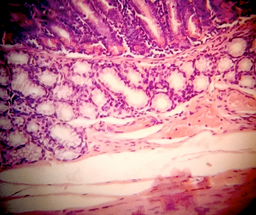Dec 26th 2023
Enhancing Gram Stain Reliability: Techniques to Prevent Gram-Negative Errors
Based on the characteristics of their cell walls, Gram staining enables us to divide bacterial species into two major categories, Gram-positive and Gram-negative. Staphylococci (“staph”), streptococci (“strep”), and pneumococci are examples of gram-positive bacteria that maintain the color of the crystal violet stain and appear purple when stained with the Gram stain. In the Gram’s technique, gram-negative bacteria, such as meningococci (bacterial meningitis) and the bacterial agents that cause cholera, do not retain the violet stain color but instead take on the red color of the counterstain.
Gram stains are frequently misdiagnosed as a result of problems with the stain process. Gram stains may decolorize either too rapidly (falsely implying Gram-negative bacteria) or too slowly (falsely suggesting Gram-positive bacteria) as a result of these problems. Try these suggestions to fix protocol-related problems and stop your stain from fading too rapidly.
1. Reduce the amount of heat used during fixation
Gram staining involves first staining the bacterial components of the cell wall, then using a decolorizer to remove the excess stain. During the fixation process, excessive heat changes cell shape and weakens cell walls. Cells may be easier to decolorize as a result of the succeeding treatment phases. Reduce the heat during fixing to lower the danger of rapid decolorization.
2. Reduce the amount of time you spend rinsing
Too much washing might result in too much fading. A false negative test might result from crystal violet because it can be washed off with water before it binds to iodine. Use a five-second water rinse maximum at all times during the operation to prevent this problem.
3. Iodine exposure should be increased
Decolorization can occur when there is insufficient exposure to iodine because of low iodine concentration. Close iodine bottles when not in use. In comparison to closed bottles, which lose just around 50% of their iodine over the same 30-day period, open bottles lose more than 90% of their accessible iodine.
4. Simplify counterstaining
All cells are stained red by washing the slide with the counterstain safranin. But if the specimen receives too much counterstain, it might take the place of the crystal violet-iodine combination in gram-positive cells. Aim for less than 30 seconds of specimen exposure to the counterstain.
5. Change the duration of the decolorization process
Shorten the time spent in the solvent and rinse fast, or select an easier-to-control decolorizing solution. The pace of decolorizing is determined by the proportion of acetone. The two acetone concentrations that differ in speed are 25% and 75%.
6. Examine the QC slides
Most likely, the specimen matches if the Quality Control slide is being too decolored. In such case, change your protocol.
7. Examine the acetone in your method
The acetone is the major decolorizing agent in your technique. The 25/75 combination will decolorize considerably more slowly than a 50/50 acetone decolorizer. Performance may be affected if you switch vendors or manufacture your own decolorizer. The process will need to be modified to work with your new decolorizing mixture.
False Gram-negative stains can result in a variety of problems for patients. If these adjustments don’t help, please contact ENG Scientific at (973) 472-7200.

